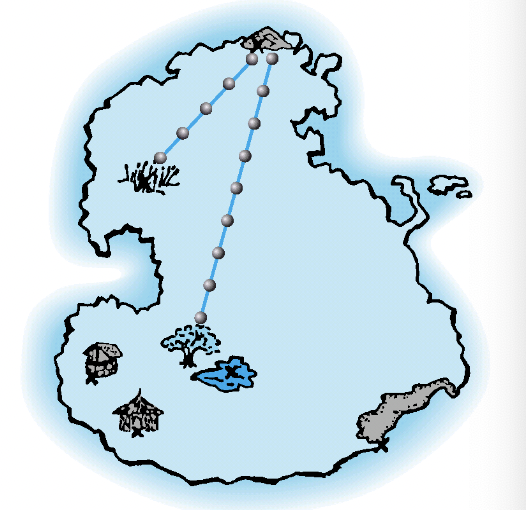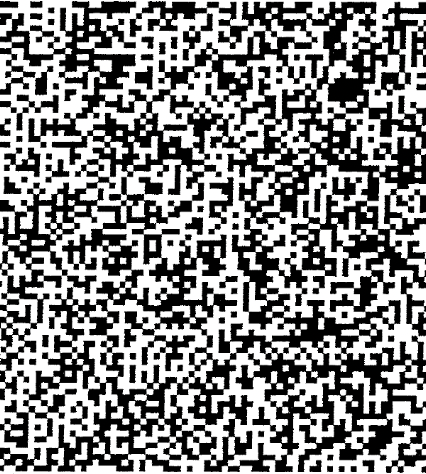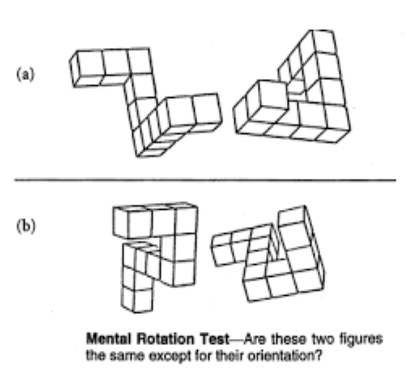Cognitive Psych Exam 1
1/114
There's no tags or description
Looks like no tags are added yet.
Name | Mastery | Learn | Test | Matching | Spaced |
|---|
No study sessions yet.
115 Terms
How does the cognitive system detect information?
Reception of stimulation from the environment, then the coding of this stimulation into the structures of the nervous system.
Transduction
Converting one form energy to another (physical energy like light or sound waves converted into electrical stimulation that our brain can comprehend and interpret).
Perception
Making sense of stimuli.
Absolute Threshold
The minimum amount of stimulation from the environment required to detect a stimulus 50% of the time.
Difference Threshold
Ability to detect the difference between two stimuli or different intensities. Defined as the small difference detectable 50% of the time. Also known as the Just Noticeable Difference.
Weber’s Law
Bigger stimuli requires larger differences to be noticed, like it being easier to notice a 5 pound addition to 5 pounds than to 50 pounds.
How much information can sensory systems process?
A large quantity, maybe unlimited.
How much information can sensory systems maintain in memory?
Using the short delay method, only 4.5 items. Using partial report to estimate how much information is coded into sensory memory before it is lost, 9.6 items. There is only so much that can be recalled before it quickly decays.
What influences perception (how people interpret information)?
Pattern recognition, like the gestalt principles, and object recognition.
Bottom-up Processing
Assessing stimuli segment/piece by piece due to the novelty and no previous experiences to draw on.
Top-down Processing
Assessing stimuli using previously learned experiences, In other words, there are expectations and experiences to draw upon.
Bayesian Classifiers
Categorizing the whole stimuli.
Principle Components
Compute whole out of individual pieces.
Discriminant Analysis
Detecting variants in an object.
Cluster Analysis
Creating groups from noisy information.
Template Model of Object Recognition
We possess stored templates of stimuli and perceive stimuli is compared to that template.
Issue: Different classes of objects can share similar features (J and T)
Feature Analysis Model of Object Recognition
Each stimuli is broken into components or features, and thus recognized by those components.
Issue: Many objects share a similar set of features. Requires structural theory to account for many features relate to one another.
Recognition by Components (Object Recognition)
36 Geons (basic components of all objects) represent an alphabet for object recognition. Recognition hinges on the arrangement of these geons, like a word.
Issue: Difficult to extract from real images. Complex shapes pose a challenge. Top-down influence goes against this concept.
Binocular Vision
Ability to perceive 3D and depth due to differences between images on each of our retina. (Retinal Disparity: difference between what the left and right eye sees)
Interposition
An object that occludes another is closer. (Pictorial Cue)
Texture Gradient
A field is assumed to have a uniform texture gradient. For example, if more detail is present in a field, it is assumed to be closer. HD = Closer, LD = Further. (Pictorial Cue)
Linear Perspective
Parallel lines converge in the distance. The closer they are to converging, the further away that location is. Ex. One-point perspective. (Pictorial Cue).
Height in Picture Plane
Objects higher up in an image are further away. (Pictorial Cue)
Atmospheric Perspective
Objects appear a hazy blue when far away. (Pictorial Cue)
Familiar Size
Our knowledge of the usual size of objects and use of reference to its likely size and distance. (Pictorial Cue)
Is facial perception special?
It’s a holistic process. Greeble experiment shows that the area associated with object recognition expertise and faces is NOT exclusively for faces.
Spatial Attention
Ability to focus on a particular position in space and to be prepared for stimuli incoming from that position. Other avenues or sources of stimuli are thus considered “unattended channels” and go unnoticed.
Bottleneck
Restriction on amount of information that can be processed at once, forcing serial processing (limiting sensory and effector system).

Early Selection Model
Attention selection is based on physical characteristics. One input is allowed through a filter on the basis of its physical characteristics (color, pitch, etc) with the other inputs remaining in the buffer for later processing.
Cocktail Party Phenomenon
Unattended information IS being processed even if participants are not fully aware of it. Information gets by and you’re able to process them deeply without much time, such as your name being called.
Switching Channels
Participants follow the semantic content of the channels.

Late Selection Model
Selection only occurs AFTER all messages have been received and analyzed according to physical characteristics and meaning People can perceive many messages, but can only respond to one.
Attenuation
People can switch their attention back and forth, adjusting throughout. Participants CAN recognize they’ve switched attention. Correct Filter Theory.
Messages are attenuated, but not filtered based on characteristics. Semantic criteria can apply to all messages, attenuated or not, and are harder to apply. Messages are adjusted on the GO.
Indirect Measures
All stimuli are evaluated for semantic content as well as their physical properties. (Shock reaction associated with shocks and city names despite no shock being administered).
Feature Integration Theory of Visual Search
Different visual features are coded into separate feature maps. Easier when only a single feature is required for the search computed by a feature map. (Feature maps refer to orientation, size, color, etc.)
Solves binding problem.
Does attention work like a spotlight?
It works, however with some factors into account. Firstly, it’s more like rings than a beam (inside-out faster than outside in.) Moving attention greater distances doesn’t take a lot of time and this implies that attention selects space.
Does the cognitive system attend to space or objects?
Attention is object-based, as we may even select a shape when it is intertwined/overlapped amongst other similar shapes. Space is still important, but object-selection is more important. (Bumps Test, faster judgements when bumps are on the same object).
Single Capacity Model
Attention is a single resource. The more it is shared, the less there is to go around and resources may deplete if stretched around. Not concrete.
Dividing Attention
Impaired performance when dividing attention. The more tasks there are, the slower the response time.
Analog Representation
Representation has the same structure as the thing represented.
Propositional Representation
Sentence-like description of the image; non-spatial.
Image Scanning Example
Longer response times to the identification of objects farther left or right.
Quasi-pictorial Processing Theory
Mental imagery involves a spatial representation. Different parts of an image correspond to discrete locations in space. Results in depictive representations. Same as visual perception but not necessarily the exact same.
Epiphenomenon
Experience of spatial images is a side effect. (Spatial Imagery)
Spatial Imagery & Epiphenomenon
Count nodes instead of mentally scanning image.

Island Example
Counting nodes. Performance hinges on REAL-WORLD experience (takes longer to travel longer distances, so that logic is applied to mental scanning). Tacit knowledge.
Application of Visual Field to Imagery
Rabbit next to an elephant and rabbit next to a fly. When asked if the rabbit had whiskers, RT was longer for the elephant picture than the fly picture.
Interaction of Perception and Imagery
Participants matched the descriptions of what they thought was mental imagery to the very very tainted image being projected in front of them without knowing. (Imagery primes perception).
Hemispatial Neglect
Can’t process information in one half of your visual field.
How do mental images influence what the cognitive system perceives?
Mental imagery can prime cognitive perception.
Can the cognitive system manipulate mental images?
Yes. Cognitive maps and their being affected by conceptual knowledge of things such as relative locations of small regions
“Nevada is east of California. Reno is in Nevada. San Diego is in California. THEREFORE Reno must be east of San Diego.”
Hierarchical Organization in Cognitive Maps
Performance was better when superordinate information was congruent with the question.
Interference in Mental Imagery
Visual interference had significant effects on high imagery. Auditory interference had significant effects on low imagery.
Category Levels
Utilize the basic level when thinking. (Think of fruit, we default to stuff like apples, grapes, peaches, etc, NOT shit like a Freestone Peach)
Mental Images and Reinterpretation
Once a mental image is interpreted, it is very difficult to see another interpretation unless you are trained.
Visual Images and Reinterpretation
The ability to physically reorient an image makes reinterpretations easy.
Primacy Effect
Easier to remember information from the beginning.
BOTH LONG and SHORT lists.
Recency Effect
Easier to remember the information from the end.
List length does not matter, but recall is BETTER for SHORT LISTS.
Modal Model
From transduction to LTM.
Sensory Input > Sensory Memory > Attention > Short-term (Working Memory) + Maintenance Rehearsal > Encoding < Retrieval > Long-term Memory

Maintenance
Top-down, sustaining memory and keeping it active. We can only report what we’re consciously aware of.
Decay Theory
As time passes, information becomes “less active.”
Interference Theory
New information replaces old information.
Dual Task Method
If two tasks rely on different processes, both can be done simultaneously without little decrements in performance. (Auditory/visual vs. Double Auditory)
Digital Load Task
Digital preloading decreases primacy (eliminating rehearsal). Delay decreases recency (eliminates contribution of STM system).
Working Memory Subsystems
(Visuospatial Sketchpad, Episodic Buffer, Phonological Loop) > Central Executive
Phonological Loop
Verbal information.
Limited by length of words.
Subject to similarity effects.
Articulatory suppression reduces capacity
Verbal WM not so affected by concurrent visual processing.
Visuospatial Sketchpad
Visual-spatial information (Double Tasking).
Constrained and attention-demanding.
Concurrent visual input negatively affects mental imagery (irrelevant pictures effect).
Not affected by articulatory processes.
Central Executive
Component of WM that directs attention and processing.
Domain general/attention pool.
Allocates attention to BOTH verbal and spatial WM when required.
Response inhibition, movement interferes with attention.
Make sure we keep track of things we stored away.

Irrelevant Pictures Effect
Diminished ability to hold onto information by just looking at noise.
Visual Representation Example of WM
Does a deer have a small or large tail relative to its body?
Spatial Representation Example of WM
Are the two figures identical except for their orientation?

Mental Scanning Task
It was easier to answer with a modality not being used by the current task. (Ex. “John ran to the store to buy some oranges” takes presence in the Phonological Loop, thus it’ll be easier to point (Spatial task) to Y or N instead of saying “Yes” or “No” which also utilizes the Phonological Loop.)
Relates to the Dual Scanning Task.
Working Memory Capacity WITHOUT Rehearsal
4 +/- 1
Working Memory Capacity WITH Rehearsal
7 +/- 2
George Miller’s “Magic Number”
Working Memory Capacity as Executive Attention
Proposes that WM capacity is more than STM stores. It also includes a mechanism for rehearsal and a mechanism that control contents of the active portion of memory.
Working Memory and Moderating Performance
Working memory affecting:
Visual (Rings task of inside out being easier than outside in)
Auditory (Dichotic listening task, the attended/unattended ear)
Response Inhibition (Stroop task, congruent words with colors and incongruent words with colors to show cognitive control over the congruency)
Cocktail Party Revisited
Low-spanners for WM noticed their name more than high-spanners, showing the low-spanner’s poor attention control.
Stroop Inteference Task & Stroop Effect
This task states that when the color of the word is incongruent with what the word says, response time is longer.
High-spanners responded faster than low-spanners.
Does memory training work?
HELL NAH, we become better at the specific task or similar tasks (near transfer) but the ultimate goal is the application to novel domains (far transfer), which doesn’t work.
Near Transfer
Training on one task lead to improvements on a similar task.
Far Transfer
Training on one task lead to improvements on a structurally different task that shares an underlying neural process.
Isolation Effect
Having a distinct feature (being red in a list of black words) boosts recall even if they had to fight against primacy and recency effects (intermediate word).
Encoding Specificity
Includes traces, state-depending learning, and that context aids retrieval.
Traces
Concerns episodes in our minds, consists of to-be-learned and peripheral information. (Emotional state, environmental context, physiological context
State-dependent Learning
Ability to recall more effectively determined by the trace of encoding.
Context-dependent Recall
Recall is enhanced when environmental, mood, or physiological state matches between encoding/study and recall.
Spreading Activation Theory
Neural excitement spreads in the brain, causing adjacent/related concepts to be activated in a spreading or cascading manner. Association between items leads to priming.
ACT-R (Adaptive Control of Thought-Rational)
Irreducible cognitive functions in your mind. (Visual perception, Production system, Problem state, Control state, Declarative memory, Manual control, etc.)
Fan Effect
The more facts that are associated with an object, the more time it takes to verify the number of facts.
Associative Priming
One item primes another item due to association with one another in some kind of way. In tests, this reduces reaction time.
Fluency
How quickly things come to mind.
Clustering
Producing words with semantic/phonemic subcategories
Semantic: pets, farm animals, jungle animals, etc.
Phonemic: cat, camel, caterpillar, chicken, chameleon, cow, etc.
Switching
Ability to shift efficiently to a new subcategory.
Local Search
Transitioning between pieces of semantic information that are either highly associated or belong to a subcategory. (dog, cat, hamster, mouse)
Global Search
Transitioning between pieces of semantic information that have little association or belong to different subcategories. (household pets, american wildlife, african wildlife)
Bound Encoding of the Aggregate Language Environment (BEAGLE)
Based on animal foraging theory and marginal value theorem. Producing items (resources) within a subcategory (foraging area) causes progressively less items to be found, thus switching to a different subcategory (different foraging area) would restore the rate at which you can produce items again.
Marginal Value Theorem
Situation where something searching for resources must decide if it is more economically favorable to leave to a different patch. (Switching from a “depleted” local search to a global search)
Search in Semantic Memory
Response times (latencies) between retrieved items that signify a category switch were longer than latencies within a category (Local search to Global search). Additionally, items that indicated a new category that were novel had higher base-rates (New local search).
Proactive Inteference
What was learned earlier interferes with the recall of what was learned later. Harms LTM retrieval. Capacity to perform well is reduced as load of prior lists increases.
“Old replaces new”
Iconic Memory
Visual sensory memory. (Lasting only for a brief moment)